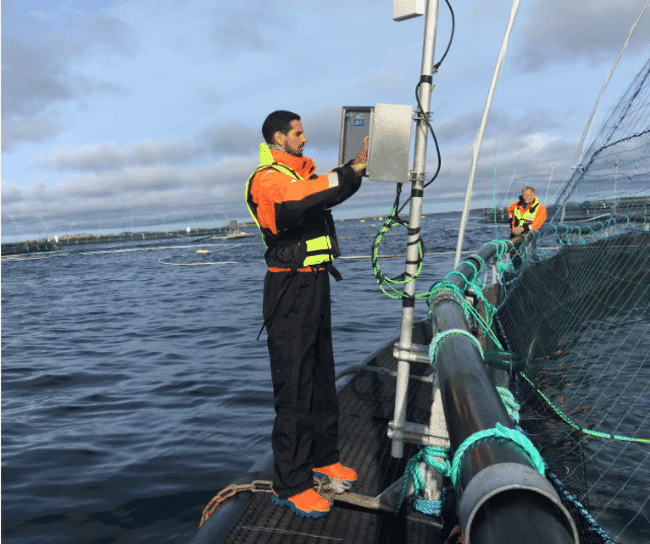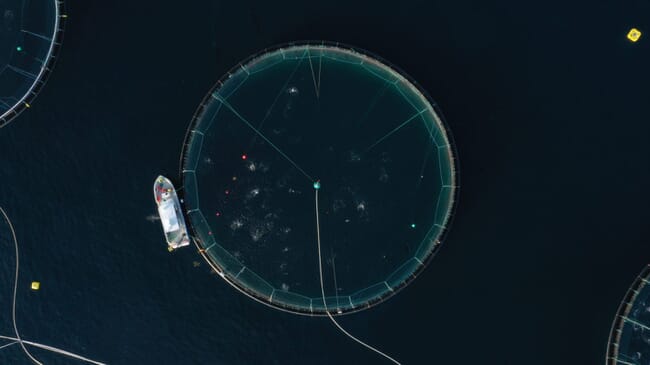
© Rosa Martínez, CTN
Called the Smart System for Feeding Control (SICA), it is a non-invasive, passive acoustic system which consists of two modules: a data logger and a control unit. The data logger, which is deployed in sea cages, acquires the data through the passive acoustic sensor, which is then transmitted via the wireless communication module. The control unit then applies the machine-learning algorithms to the data allowing it to make decisions about the feeding process.
“Our system combines different technologies, like passive acoustic sensors, internet of things and machine-learning to monitor and control fish behaviour in the cages,” said Rosa Martínez Álvarez-Castellanos, an R&D technician at Centro Tecnológico Naval y del Mar (CTN), in the latest issue of Norwegian Scitech news.
The SICA system operates autonomously, acquiring and processing the acoustic data. The technology is non-invasive and provides real-time monitoring. It has been found to detect unusual feeding behaviour more effectively than underwater video cameras. By improving the efficiency of the feeding process, salmon farmers can reduce environmental impacts and increase their production.

© Magnus Oshaug Pedersen
Worldwide testing
CTN first tested the system on sea bass farms in the Mediterranean. To verify that the concept works under different conditions, and in order to train the algorithms, they then performed tests at the SINTEF ACE full-scale aquaculture facilities in Frøya, Norway.
This was deemed to be crucial by Álvarez-Castellanos and her colleagues.
“We needed access to good facilities to get the best results, and especially under such harsh conditions. In particular, we were able to test our equipment under different weather conditions and with the proper feeding equipment. The results showed that our concept is working,” she said.
The facility provided access to a fish farm, boats, sensors, and assistance to set up the units at different cages. They also had fast wireless communication that helped them to test the system thoroughly.
“This fast connection allowed us to expand the collaboration between CTN in Spain and the system (SICA) in Norway during the experiment,” said Álvarez-Castellanos.



